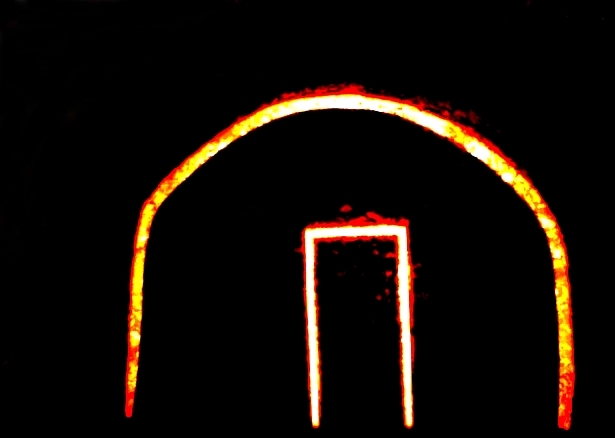INCENDIARY FOR AN INSTANT (excerps from)
What is the basic motivation behind that which you call ‘pure” light research?
First and foremost acknowledging a contradiction. Light, which in reality is a primary factor, generative and energetic, a source of life and
nourishment with respect to things, is commonly seen as a secondary, supporting element in theatre, to be considered when the production
is being finished off, as part of its ’completion’ and ’packaging’. Moreover, an element that’s almost only dealt with in technical and image related
spheres, neglecting its essential characteristics such as its ability to shape space and time, producing meaning and poetry, building drama and acting.
(…..)
A key moment in your ‘pure’ research on light was the work you did in ‘92 with i Guzzini.
I Guzzini found out about my workshops in Catania and asked me to do a light show for them at a major design event in Arezzo. There were various pavilions and areas for exhibitions, meetings and discussions in a kind of temporary city of design. Mendini, Giugiaro and many other designers were there. My ‘pavilion’ was actually a theatre that i Guzzini built based on my design. It was a wooden theatre with a small terraced seating area for the audience and two stages, one behind the other, inclined like Italian stages with tulle netting between them. The audience’s view was not just at the front. Lots of things were going on at the sides, on the ceiling, above and in the middle of the audience. The performance
followed a very precise score, detailed to the second, that I’d outlined on a huge amount of pages, crammed full with instructions, notes and numbers. The fact that I also designed the theatre was ideal because I was able to control everything, the position of the audience, viewpoints, and different perceptual possibilities. The protagonists of this work were the Guzzinis’ own lighting devices, used as light sources as well as objects. Design objects with their own form, history and memory. They were in a reciprocal relationship through the light, appearing, disappearing, illuminating each other, creating new forms, resonance and memories in these movements. The piece lasted about forty minutes and was totally automatic, stored on disk. Different audience groups were brought in over the course of the day according to set schedules. Each time a new group arrived, a technician would give a simple command for the show to start, then it would go on by itself.
(…..)
In terms of method, what changes between productions without actors, such as those were you experiment with light, and those with actors?
Obviously the technical and relational problems change, but the rules of construction aren’t very different. In both cases the central issue is structuring time, and this is done with the elements available, which can be different every time.
What is your notion of directing?
Directing is above all paying attention to and then guiding the tension created under established conditions. Orientating and structuring ‘movements’ inside a new ‘universe’ for which you have defined the rules.
What do you mean by ‘movements’?
The performers’ inner and physical movements, and also the movements of objects, space, light, sound and the audience.
What position does the text have in this kind of approach?
If there is a text, it draws life and shape from that new ‘place’ and from the body. It originates within ‘movement’, not – or not only – on the page.
(Nika Tomasevic (ed.), Incendiary for an Instant. Interview with Fabrizio Crisafulli, in Ead., Place, Body, Light. The Theatre of Fabrizio Crisafulli, 1991-2011, Artdigiland, Dublin, 2013, pp. 34-38).
